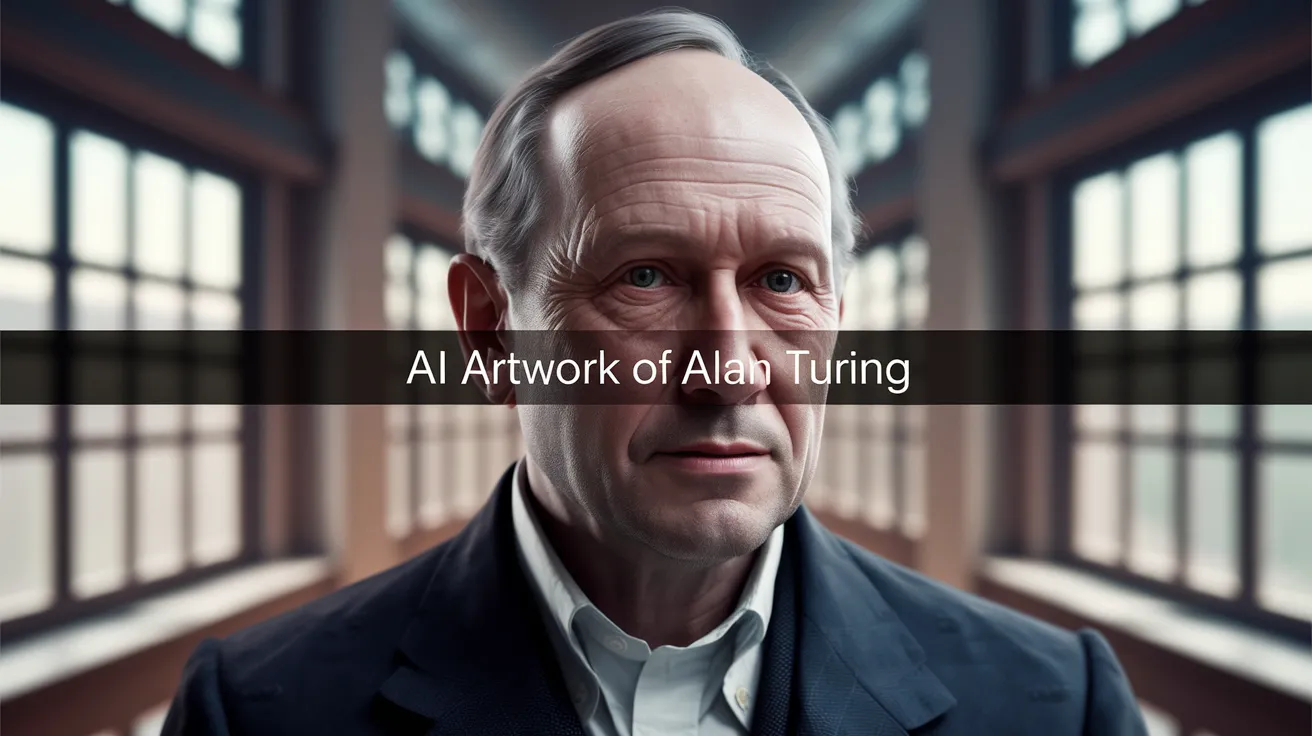AI Artwork of Alan Turing Fetches $1M

A remarkable milestone in the art world was reached recently when a painting of Alan Turing, rendered by the AI robot Ai-Da, was sold at auction for an astonishing $1,084,800 (£836,667). The digital artwork, titled “A.I. God”, garnered significant attention, as it was expected to fetch between $120,000 (£9,252) and $180,000 (£139,000). This sale reflects not only the rising value of AI-generated art but also its cultural significance.
Sotheby’s, the respected auction house, reported that 27 bids were placed during the online auction, indicating a strong interest in artwork created by AI. This event is historic as Ai-Da is recognized as the first humanoid robot artist to have a work sold at auction. Turing, who is often celebrated as the father of artificial intelligence and a key figure in the advancement of computer science, is depicted in a large-scale portrait that pays homage to his legacy.
The auction’s outcome illustrates a new frontier in the global art market, establishing a benchmark for the selling price of AI-produced pieces. According to Sotheby’s, the unprecedented sale signals a significant moment in the trajectory of modern and contemporary art, showcasing the interplay between artificial intelligence technology and artistic expression.
Ai-Da, who employs an advanced AI language model to communicate, articulated her perspective on the work: “The key value of my work is its capacity to serve as a catalyst for dialogue about emerging technologies.” The artwork encourages viewers to examine the implications of AI and what it means for society today, urging reflections on ethical and societal challenges that come with rapid technological advancements.
Aidan Meller, director of Ai-Da Robot Studios, emphasized the importance of this auction by stating that it sheds light on evolving dynamics in the visual arts as society adjusts to the complexities of AI’s growing influence. He remarked that the artwork poses crucial questions surrounding agency and the extent of AI’s capabilities.
While initially reported to have sold for $1.3 million, Sotheby’s later corrected this amount, stabilizing at the final winning bid of just over a million dollars. This event not only celebrates a remarkable achievement for AI but also prompts ongoing discussions about the future of art in an increasingly automated world.
Overall, this auction highlights a significant juncture in both the artistic and technological landscapes and invites continued exploration of the relationship between art and AI in future endeavors.